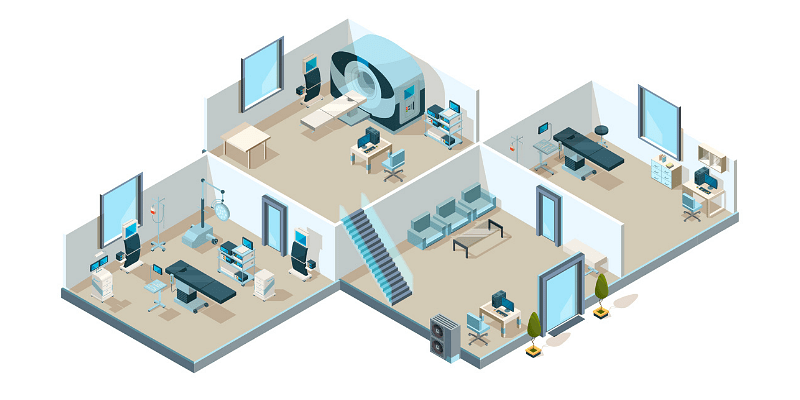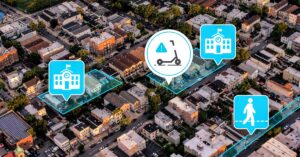Last year, the pandemic brought forth the inadequacies of the current healthcare systems around the world. The collapse of the healthcare systems, lack of intensive care units, overpopulated hospital wards, and the sudden increase in the need for healthcare infrastructure has given rise to a paradigm shift.
Healthcare practitioners and designers worldwide are working in tandem to bring about fundamental changes in healthcare design and its implementation.
The Insurgence of Smart Preventive Care, a paper by Creative Designer Architects, tracks the probable future road map of changes that will revamp the medical service sector in the most accurate meaning of the word.
The article refutes the argument that the inevitable solution to a collapsing healthcare system is to build more infrastructure, like metaphorical crutches holding up a dilapidated entity.
Health futurists and researchers are now focused on orienting the healthcare system towards a more digitally seamless care delivery model that attempts to retain the innate essence of care through technology.
The 2 stages of healthcare advancement
The advancement and innovation in healthcare technology have two probable stages of growth. The first stage will focus on evolving the hospital as a ‘smart building’ that is efficient and responsive. The second and the more advanced model will focus on integrating and engaging technology as an inherent part of the healthcare infrastructure.
With these advancements and collaboration with IoT, the future of healthcare systems will result in an efficient model that is less susceptible to untimely collapse and will stop healthcare consumerism.
Stage 1: Hospital-centric model
The hospital-centric model is primarily an exponential prototype of generic care delivery — where patients turn to medical help in a hospital. This advanced model of care will employ radical tools such as Artificial Intelligence and IoT charged with Big Data.
The data analytics from the healthcare industry will comprehend patterns of patient dynamics, disease profiles, logistical use, etc., to develop several plausible delivery scenarios.
This data will create iteratively optimised hospital designs that are responsive to patient needs and hospital efficiency. With optimised data, expert medical planners and advanced technological interventions, the model could demonstrate how an existing hospital floor plan can be reconfigured and utilise non-functioning departments into ICUs when pandemics like COVID-19 come knocking.
Using digitally programmable architecture to be sustainable, the model will identify infection-preventing materials and focus on mechanical design, erection, and operation.
This system will be aided by app-based scheduling and consultation for each patient, which will smartly manage the masses that would wait in endless queues. Advanced logistic support mechanisms will ease the dependence on care providers.
For instance, the use of AI-driven drones or automated track vehicles either embedded within the plenum or concealed in a see-through tunnel cut down on unnecessary displacement to provide for medicines, linens, testing samples, etc.
Stage 2: Technological advancement
The second stage of the plausible scheme will be to deliver care through a digital blanket of responsive IoT networks, eliminating the need for infrastructure for specific consultations, diagnostic, and in-patient departments. The model will allow healthcare practitioners and designers to optimise their infrastructure for intensive and critical care.
This model can potentially bring about a revolution in the industry, benefiting several stakeholders and reducing costs, complexity, and carbon footprint of healthcare infrastructure.
A patient’s health will be monitored by intelligent infrastructure linked via the cloud to the hospital, which will provide remote healthcare while in the comfort of one’s own home. From HD cameras to sensing monitors, a patient’s health will be constantly watched, and in case of discrepancies, alarms will be sent out to the doctor.
Currently, in its formative years, the IoT or the IoMT (‘Internet of Medical Things’) has already entered healthcare systems. However, healthcare professionals need to understand digital connectivity along with data threats and complexity. Therefore, data and network security and storage need critical thought while these transformation systems advance.
The role architects play
From a healthcare design standpoint, architects and designers need to look beyond functionality.
In a post-pandemic world, healthcare designers need to set forth innovative solutions that seamlessly blend altruism with technology to create a robust ecosystem, the benefit of which is bifold. These solutions will render high-quality medical care to those in need and focus on patient safety, satisfaction, and comfort at present.
To fathom these waves of change may seem incomprehensible to an untrained ear. However, significant strides in the research and development of these schemes are under way, and the future is promising.
The involvement of tech giants is also anticipated in the years to come. Only exemplary strength will heal the ruptured healthcare system and refurbish it into a complete turnaround. With all spirits and energies heading in the right direction, an evolved healthcare system awaits.
(Disclaimer: The views and opinions expressed in this article are those of the author and do not necessarily reflect the views of YS.)









